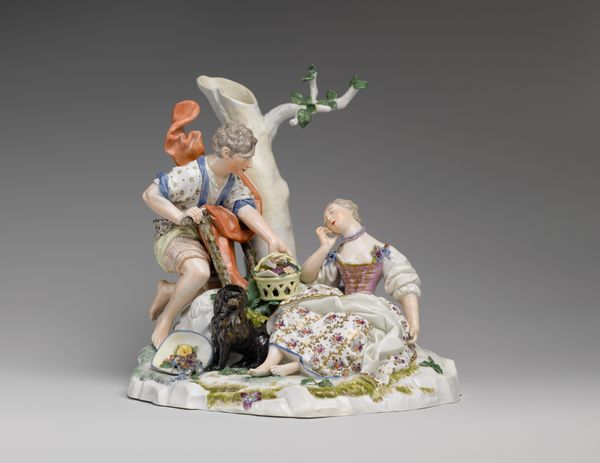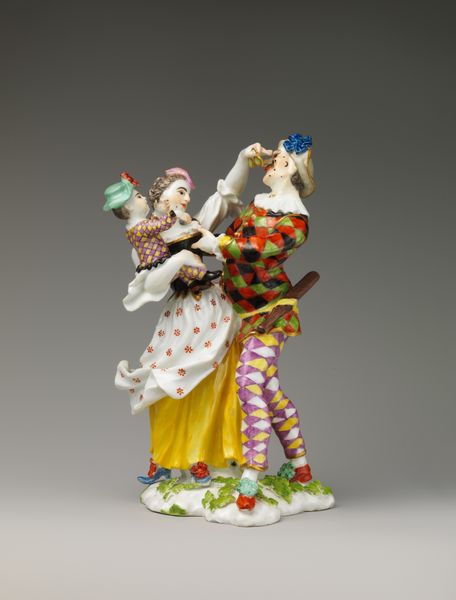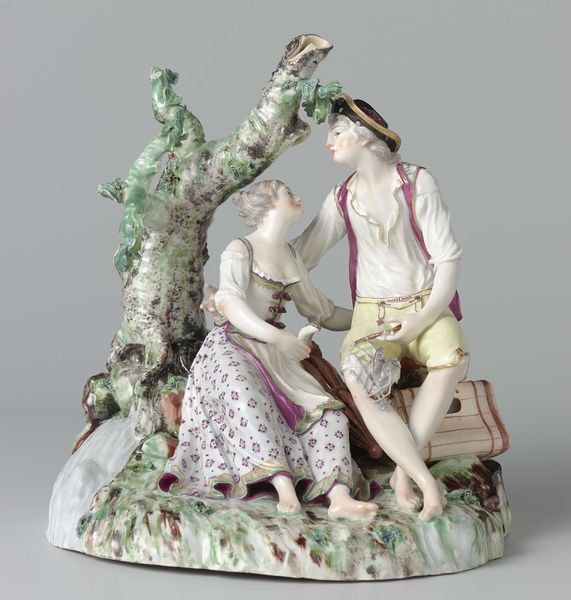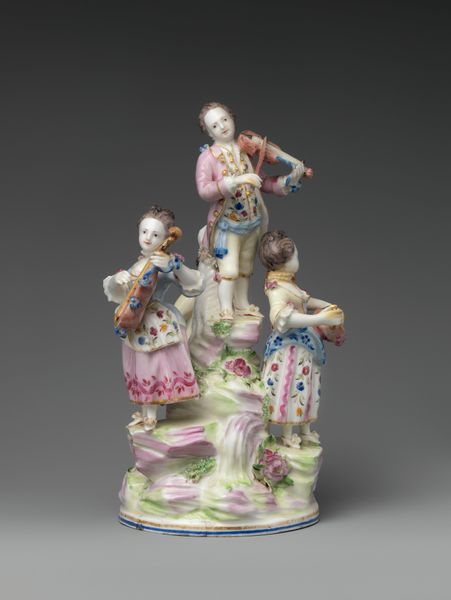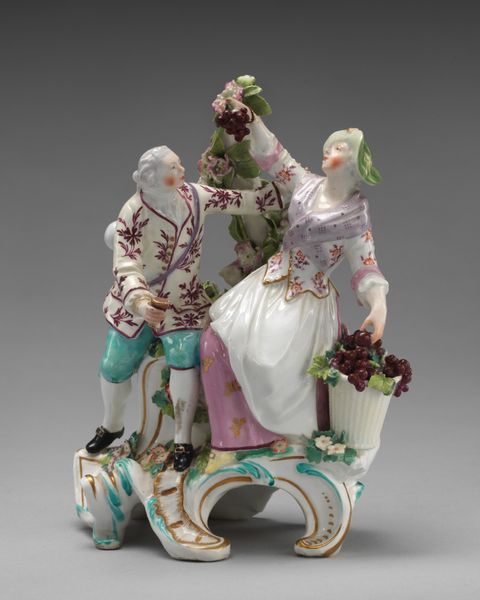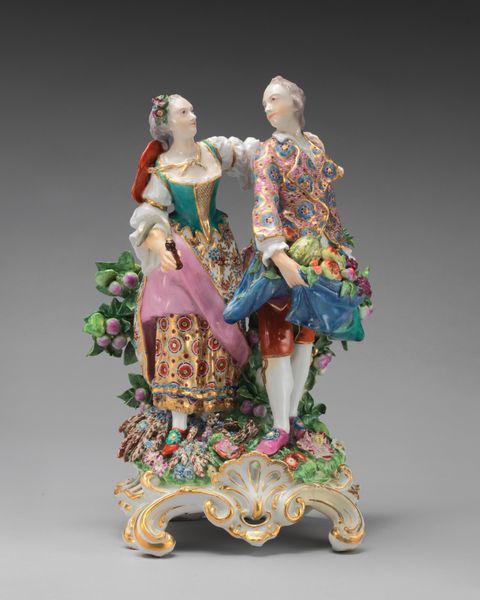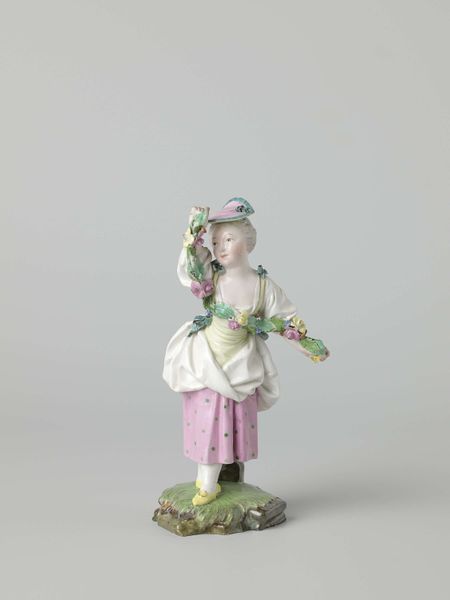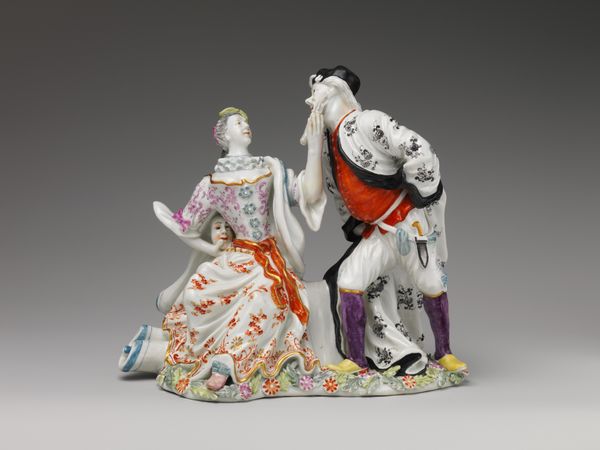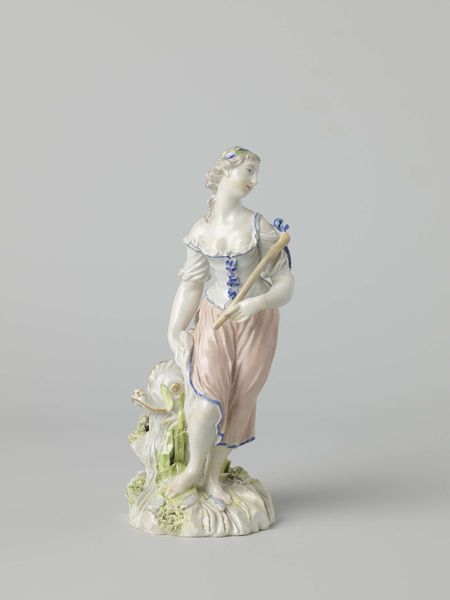
porcelain, sculpture, pendant
#
porcelain
#
figuration
#
sculpture
#
genre-painting
#
rococo
#
pendant
Dimensions: height 15.4 cm, width 12.4 cm, depth 7.2 cm
Copyright: Rijks Museum: Open Domain
Curator: This captivating porcelain sculpture, originating from the Porzellanmanufaktur Frankenthal around 1765-1770, is titled "Figure representing spring." The piece currently resides here at the Rijksmuseum. Editor: My initial reaction is how delicate it appears. The colours are so muted and soft, creating a serene, almost dreamlike quality. It’s a tableau of courtly elegance meeting agrarian imagery. Curator: Indeed. This sculpture is characteristic of the Rococo period. Its style reflects a fascination with elegance and playful themes and was particularly popular among the aristocratic circles. The figures, a dapper gentleman and a poised lady, both holding baskets of fruit, perfectly embody this aesthetic. Editor: Absolutely, but it's also hard not to read these figures through a contemporary lens. What were the real-life power dynamics? This porcelain is beautifully crafted, no doubt. However, it feels vital to discuss that celebrating these seemingly 'simple' motifs idealises a privileged existence while perhaps eliding the experiences of actual farmers and labourers. Curator: That's a valid point. We must contextualize its historical situation; during this period, the French court found fascination and amusement in mimicking rural life, as manifested for example in the gardens of Versailles. It was more about representing idyllic representations of this "spring theme", very artificial compared to how most farmers were having hard lives at the time. Editor: This is fascinating when thinking about access, right? Art about idyllic nature, made from rare materials, to decorate a palace where the people commissioning had everything they needed. What does it mean when luxury goods show images celebrating ‘ordinary’ or ‘rural’ people in idealised and probably extremely inaccurate settings? Curator: I agree; its artistry highlights the gap between social echelons through the luxury this is made in and in representing that idea of spring or youth. These Rococo porcelains offer valuable insights into the cultural preferences of the elite and are a document, although biased and very elitist, of a social history now long past. Editor: Precisely. Approaching "Figure representing spring" demands an interrogation of the Rococo style itself. Understanding who crafted it, for whom, and what they stood to gain by depicting this fabricated pastoral scene is what enables critical dialogues about identity, wealth, and representation. I walk away reflecting on how the meaning and the cultural importance of a certain kind of beauty can radically shift throughout history. Curator: Well said! It highlights the dynamic interplay between artistry and context.
Comments
No comments
Be the first to comment and join the conversation on the ultimate creative platform.

